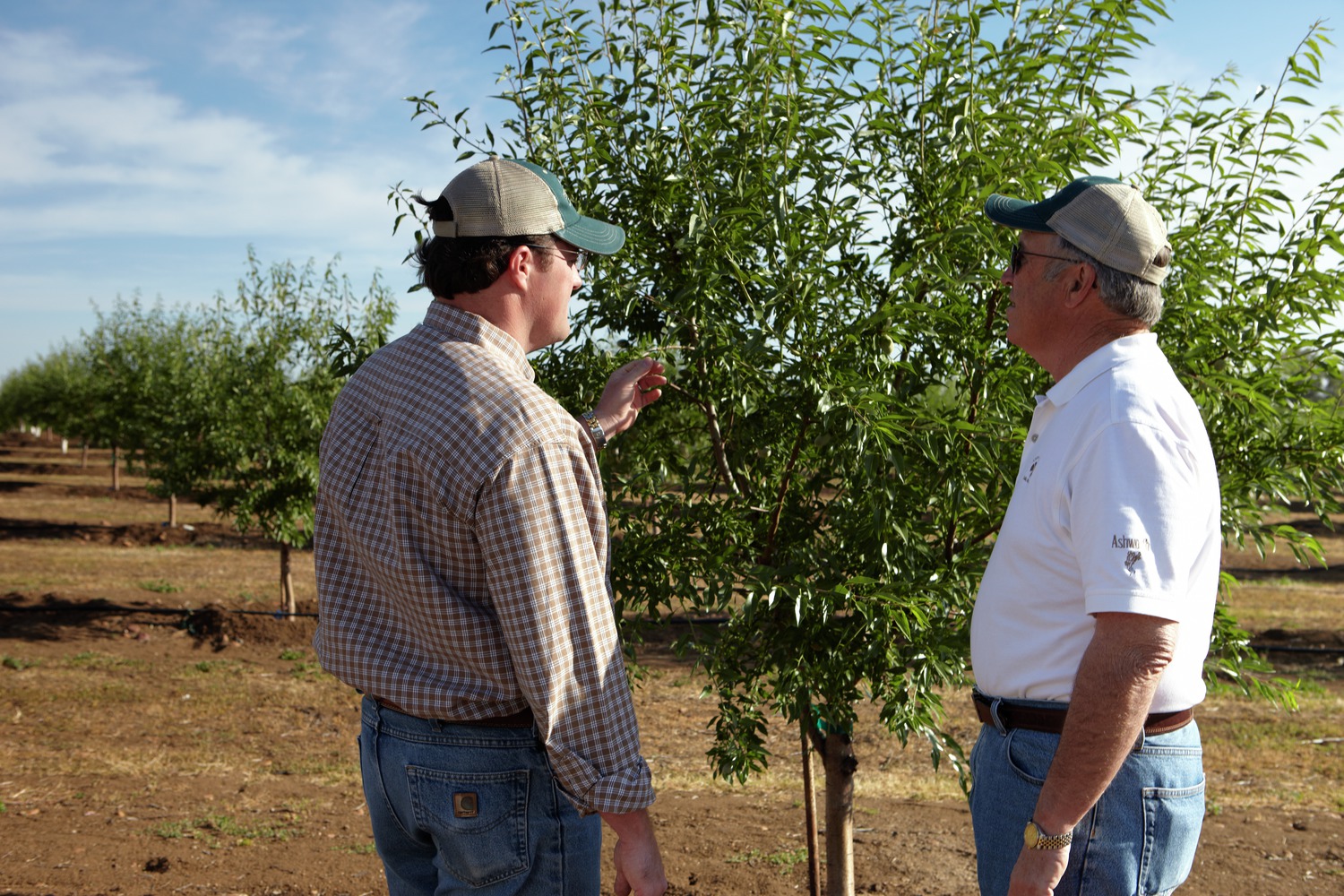With the 2019 harvest behind us, Almond Board staff and committee and workgroup members are turning their focus to priorities for 2019/20 and beyond. Among those committees is the Strategic Ag Innovation Committee (SAIC), which sets direction and provides oversight of the more than $6.5 million budget allocated for annual production and environmental research. SAIC’s work is supported by six workgroups made up of industry stakeholders whose technical depth and experience brings key insights in areas such as pollination, soil health and pest management. Workgroup members provide recommendations to SAIC that aim to ensure ABC-funded research is relevant, practical and forward-thinking.
 Among the many research priorities SAIC will discuss at its Nov. 12 meeting is the committee's goal to accelerate development of improved self-compatible varieties and rootstocks.
Among the many research priorities SAIC will discuss at its Nov. 12 meeting is the committee's goal to accelerate development of improved self-compatible varieties and rootstocks.
This year, SAIC will work with ABC staff to develop several medium-term research strategies that will shape the almond orchard of the future and drive the industry toward achieving the Almond Orchard 2025 Goals. The committee will convene next week Tuesday, Nov. 12, to strategize and shape priorities in the following areas: rootstocks and varieties, pest management, pollination, water use efficiency and harvest techniques.
- Rootstocks and Varieties: The goal of SAIC’s strategy around breeding is to accelerate development of improved self-compatible varieties and rootstocks to increase productivity among the range of soils found in California and to further develop resistance to persistent soil-borne pests and diseases. Another key aim is to revise the systems for testing and selecting improved varieties, shortening the time it takes to deliver new varieties by engaging both public breeders, growers and nurseries.
- Pest Management: For years, ABC-funded research has delivered tools to growers and PCAs to help manage the long list of pests and diseases that impact almonds, from IPM solutions for Navel Orangeworm and web-spinning mites to providing unbiased testing of the efficacy and use of commercial pest management products. Still, the tools of today may not be sufficient for the orchard of tomorrow due to the evolution of resistance by the pests themselves or to the loss of chemical tools because of changes in regulation and market thresholds.
As such, the Pest Management Workgroup, made up of experienced PCAs, growers and farm advisors, is prioritizing the discovery of environmentally friendly alternatives to the most at-risk pest management tools and looking at gaps in the tools available. SAIC will then take those learnings and priorities into consideration as they develop a strategic pest management research plan that focuses industry dollars on the most critical pest needs.
- Pollination: While the cost of pollination services continues to rise, the link between almond production and bee health is also coming under greater scrutiny. Seeing these trends, SAIC asked ABC’s Pollination Workgroup, together with leading bee researchers, to project the future of almond pollination. Among factors under discussion are the potential for a reduction in recommended hive stocking rates, changes in beekeeping business models and the continued growth of self-compatible varieties. The strategic direction coming out of these discussions will impact not only SAIC’s research priorities but also provide input to ABC’s Board of Directors Strategic Retreat held in January 2020.
- Water Use Efficiency: SAIC will take a fresh look at how the industry should manage water in the future with their eyes set on the Almond Orchard 2025 Goal of reducing the amount of water needed to grow a pound of almonds by 20%. ABC staff are also working with researchers and strategic partners to create a plan that defines the potential to expand the water supply through groundwater recharge. Together, these topics will inform SAIC’s discussion of the water research priorities for production and environmental outcomes.
- Harvest: The committee will revisit its plan for off-ground harvest, discussing the results from grower-hosted experiments held this summer to determine mechanical drying’s potential benefits on almond quality as well as the progression and capabilities of innovative harvest equipment.
As almond quality and sustainability continue to distinguish California almonds in the international market, ABC staff and the Sustainability Workgroup will tap into the wealth of data compiled from ten years of the California Almond Sustainability Program (CASP). The group will also consider how developments among Consumer Packaged Goods companies and consumer markets should shape research priorities for the next several years.
Industry members are welcome to attend the next SAIC meeting, held Nov. 12, or any of the upcoming workgroup meetings, which are conducted in person with an option to call in. A schedule of upcoming ABC meetings may be found at Almonds.com/Events.
In addition, those interested to learn about the industry’s progress in reaching the 2025 Goals are invited to attend a session at The Almond Conference 2019 titled “Almond Orchard 2025 Goals: The Roadmap to Success.” This session will be held Tuesday, Dec. 10, from 9:15-10:00 a.m. in Room 1. More details are provided on the Agenda page at AlmondConference.com.